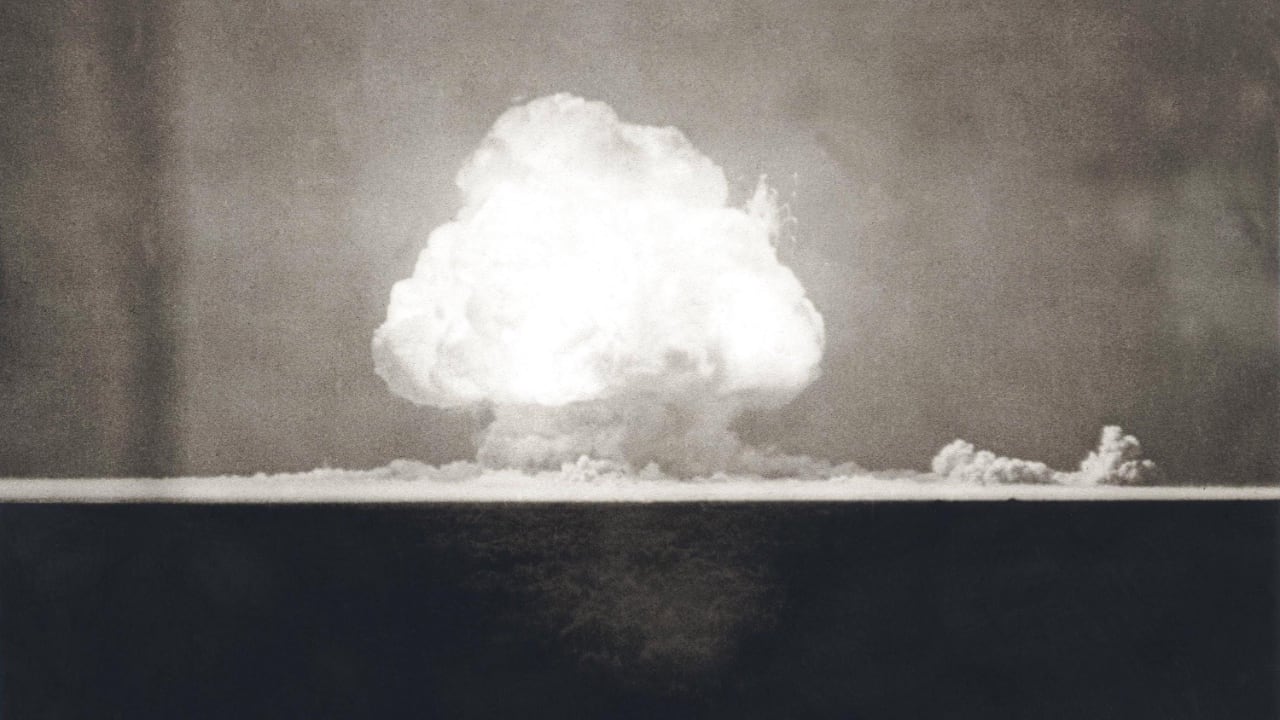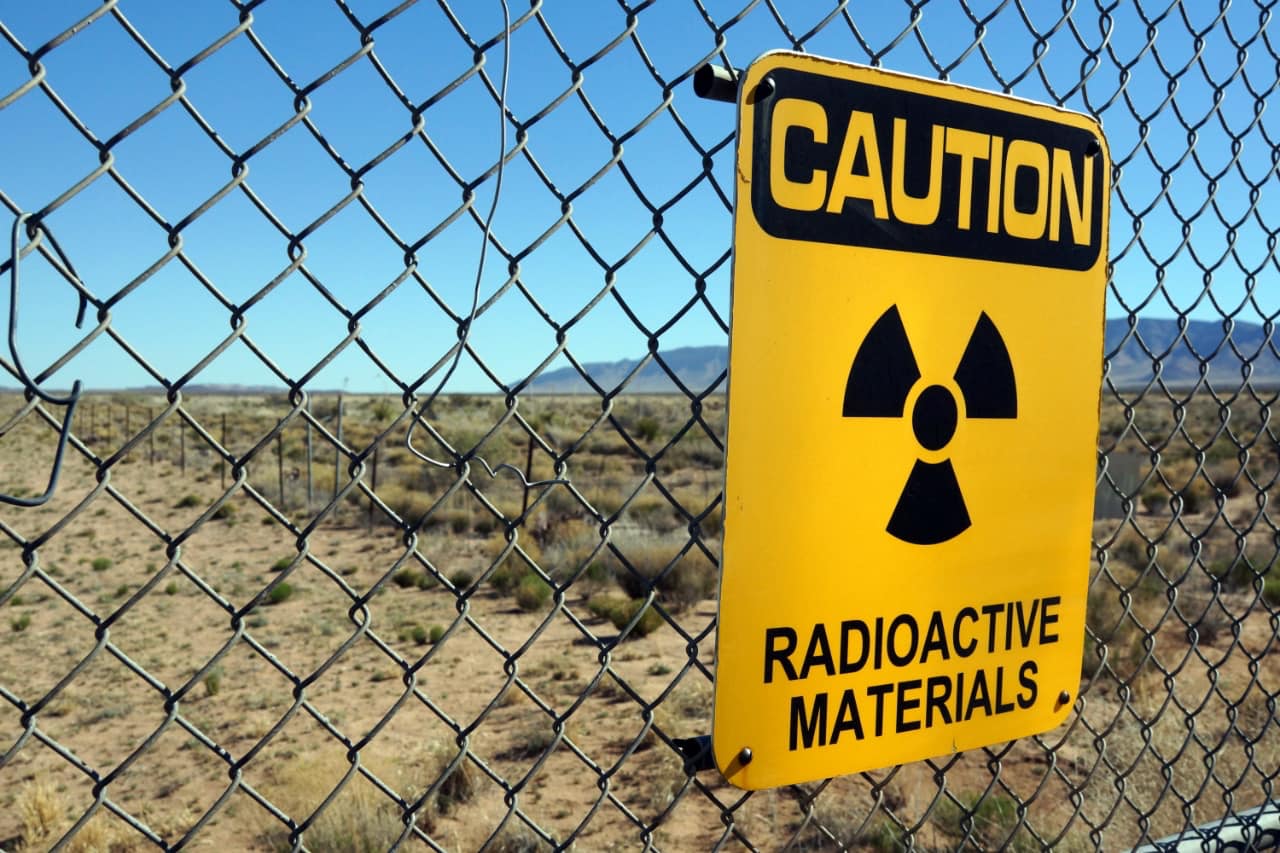
Using real world practical effects to tell a story is a great ambition, but perhaps there are some things that only CGI can do convincingly.
Recently, someone released a little movie about the development of nuclear weapons during the second world war. There’s a lot that’s interesting about it, and about other work from the auteur. It’s an example of what a British observer might call real-ale filmmaking, avoiding the conveniences of modern technologies in pursuit of truth-telling.
In the case of Oppenheimer, a biopic concerning everyone’s favourite womanising physicist, this seems reasonable. After all, we’ve all sighed our way through scenes of obviously-fake superheroes pirouetting their way around obviously-fake environments to prevent an obviously-fake end-of-world scenario. It’s no coincidence that the world’s first attempt at an actual end-of-world scenario probably deserves a more realistic depiction than we usually get from the techniques used to realise the popcorn-pushing exploits of Captain Greenscreen.
There are reports that a few people have been to see Mr. Nolan’s atom-smashing blockbuster. The current box office report is $717.8 million on a $100 million budget, which is refreshing in a world which probably makes too many nine-figure movies. How much of this spectacular success can reasonably be attributed to the film’s devotion to real-world shooting is, perhaps, dubious. Top Gun: Maverick did more than twice the money, albeit on pushing twice the budget. It, too, was promoted on the basis of having been made with a minimum of post production visual effects, putting cameras and cast in the cockpits of real military aircraft.
Hidden CGI
In reality, there’s a lot of CGI in Top Gun: Maverick, from subtle touches such as the rainbow-tinted helmet visors to the hero F-14 jet. There are other examples of films which appeared to eschew CGI but which were actually very much improved by them. A climactic sequence of Max Max: Fury Road, for instance, sees vehicles in combat as they drive down a narrow ravine. The real ravine was less dramatic; the rocky walls were at enhanced by computer-generated additions. Perhaps because rocks are a relatively straightforward subject for CGI, they’re about as convincing as any visual effects ever could be.
That’s not the reputation of a lot of modern CGI. Much has been said about why the likes of Jurassic World often looks less convincing than Jurassic Park, 22 years its senior. Possibly it’s something to do with the fact that Jurassic Park has fewer than 60 visual effects shots involving computer-generated dinosaurs, representing less than four minutes of actual screen time. Jurassic World has more than two thousand. Sheer human effort is being spread too thin by an industry which has become complacent about CGI, leading to unrealistic workloads and last-minute capriciousness that makes top-notch work almost impossible.
But, as Maverick and Fury Road demonstrate, that’s not inevitable. And, at risk of offending one of the film’s many, many, many fans, there are things about Oppenheimer which might have looked better given digital intervention. This article contains spoilers for the film from here on, although most people probably walked into screenings aware that the film features quite a large explosion.
Falling short of true Armageddon

Perhaps the director should have gone for a more convincing recreation...Pic: Shutterstock
Visual effects at this level are all too often discussed in isolation, without consideration of the story they’re intended to serve. Oppenheimer’s pacing is, at the least, a challenge to conventional expectations. Viewers who will have seen the film in the confident expectation that a cataclysmic explosion might have been set at the overall peak of dramatic tension. Nolan’s frequent reliance on nonlinear storytelling, from Memento via Inception to Tenet, is in full effect here, and so the option to reorder events into something more conventional was, clearly, deliberately avoided.
Still, there’s one aspect of that pivotal scene which is harder to overlook, and that is the explosion itself. Search YouTube for “Trinity test” and the first results are from the movie, but it doesn’t take much to find the actual footage of the world’s first plutonium bomb exploding on July 16, 1945. True to his word, Nolan avoids CGI. He also avoids the cloud tank, which was clearly responsible for some of the other, more abstract visuals used in the film. Various approaches were used to suggest the nuclear explosion itself, some of which are very successful. The estimable William H. Baker produced some extremely convincing recreations of certain moments, especially the expanding sphere of the first few milliseconds. Baker’s video amounts to more or less a detailed how-to which is worth a few minutes of anyone’s time.
Nolan’s giant fireball itself, though, looks like the same technique which has been beloved of special effects people for decades. Blast a lot of flammable liquid into the air and set fire to it – it’ll even create a mushroom cloud. The problem with Oppenheimer’s nuclear fireball, though, is that it just isn’t enough. It’s clearly just a large conventional explosion. Yes, the Trinity test did create a vast ball of fire which rose majestically into the air, but what we see in the film is clearly something much smaller, much nearer.
It suffers the same problem as the pyrotechnic space rocket effects of history, which often lacked the sheer scale and violence of the real thing. The engines on fake movie fighter jets often pale into in comparison with actual gas turbine engines. When something’s creating a string of mach diamonds almost as long as the vehicle itself, it’s sort of difficult to duplicate that at one-twelfth scale in a way that doesn’t risk removing a wall of the studio.
That’s where CGI, compositing, and other modern techniques do well. There are other things to criticise about an absolute attitude to photochemical-only filmmaking, from jarringly variable black levels to issues matching material shot through a rapidly-advancing dusk, things which are now very fixable, in ways that don’t cost us much of that hard-won verisimilitude.
None of this seems to have affected the success of this summer’s biggest hit, so perhaps this is all a waste of words. Still, there seems to be at least some room for the argument that if traditionalism is good, extremism is worth avoiding.
Tags: Post & VFX


Comments